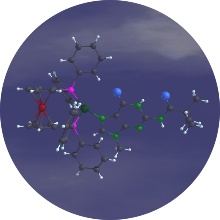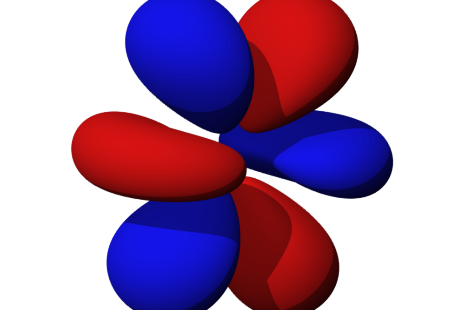Group of Prof. Dr. R. Niewa
Inorganic Materials Chemistry
Inorganic solid-state and materials chemistry. Preparation and characterization of functional materials, primarily with the nitride ion as component: hard materials, electronic and magnetic materials, catalytically active materials, nanoscale materials. Synthesis at high temperatures, high pressures, ammonothermal syntheses, metastable compounds. Structure determination via X-ray and neutron diffraction, electronic and magnetic properties as well as mechanical and chemical behavior.
Group of Jun.-Prof. Dr. B. Rasche
Inorganic Solid State and Electrochemistry
The electrochemistry of crystalline solids has surprising things up its sleeves. We discover new, metastable phases, change physical properties such as the critical temperature of superconductors and find systems that can work as sensors. Our methods include traditional solid state techniques for synthesis and characterisation, various electrochemical methods and in-situ X-ray diffraction coupled with electrochemical experiments.
Group of Prof. Dr. Ch. Sindlinger
Molecular Inorganic Chemistry
Prof. Sindlinger investigates the synthesis of boroles and other molecules of unusual electronic properties and states with a particular interest in structure elucidation of both – atomic connectivity and electronic structure.
He focuses on:
- Antiaromatic heterocycles and their coordination chemistry
- Low-valent main group compounds
- Hydrides and element-hydrogen bonding of heavy elements
- Experimental and computational methods of structure elucidation
- Heteronuclear NMR spectroscopy – experimental and computational
Group of Prof. Dr. I. Hartenbach
Inorganic Solid State Chemistry
Rare-earth metal molybdates and tungstates as well as their derivatives with several monovalent anions and alkali metal cations and bismuth derivatives. Charactarization via crystal structure analysis, vibrational spectroscopy, and microprobe analysis. Investigations on their suitabilty as luminescence materials. Synthesis and characterization of reduced molybdates and tungstates.
Group of Prof. Dr. B. Sarkar
Inorganic Coordination Chemistry
Catalysis and switchable molecules meet (spectro) electrochemistry
Group of Prof. Dr. D. Gudat (retired)
Molecular Inorganic Chemistry
Aromatic phosphorus heterocycles and their coordination chemistry. Group 14 and 15 congeners of carbenes. Phosphanes with particular functions and reactivities. Nmr spectroscopy. Spectroscopic and quantum-chemical investigations into electronic properties of compounds of main-group elements.
Group of Prof. Dr. W. Kaim (retired)
Inorganic Coordination Chemistry
Organic, inorganic, main-group and transition-metal organometallic compounds with unusual optical, magnetic and electrochemical properties, development of N-heterocyclic ligands, radicals and radical ions as catalytic intermediates and in biochemistry, electronic structures of π systems; UV/VIS/NIR and ESR spectroscopy, spectroelectrochemistry and photochemistry, use of MO calculations..
Group of Prof. Dr. Th. Schleid
Inorganic Solid State Chemistry
The research focus of the Schleid group lies in the area of multi-anionic salt-like inorganic solid-state compounds, mainly with rare-earth metal cations. Both atomic (F–, O2–, N3–, S2–, Se2–, etc.) and complex anions (borates, silicates, phosphates, etc.) are used. Besides synthesis and characterization via X-ray structure analysis, the investigation of structure-property relationships plays an important role. The latter comprises the luminescence behavior of doped compounds, magnetism, ionic- and superconductivity of selected compounds as well as the the investigation of pressure- and temperature induced phase transitions.










